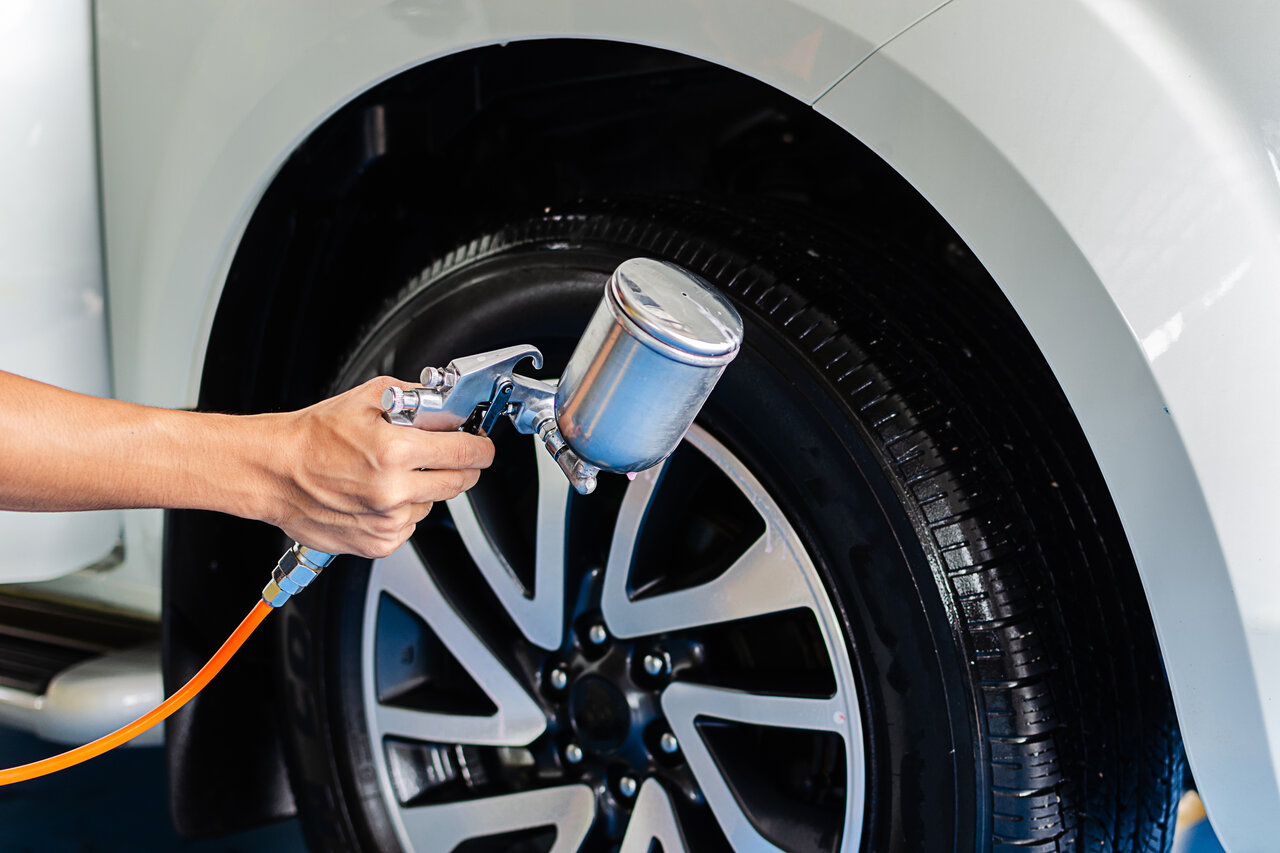One crucial aspect of alloy wheel refurbishment is the kind of finish that will best suit your needs. Two popular options are traditional paint and powder coating, offering unique advantages and qualities. East Coast Coatings, a leading alloy wheel refurbishment business based in Larne, Co. Antrim, specialises in the powder coating process. In this article, we will explore the essential differences between powder coating and traditional paint, their advantages, and why powder coating may be the better choice for your alloy wheel refurbishment needs.
Traditional paint has long been the most common finish used for various applications, including vehicles, due to its affordability and perceived ease of application. However, with new technological advancements, powder coating has emerged as a popular alternative, offering numerous benefits such as increased durability and lower environmental impact. This has led to a growing demand for powder coating services, particularly in industries that require robust, long-lasting finishes.
As a leading supplier of alloy wheel refurbishment services, East Coast Coatings uses powder coating to create high-quality, visually appealing wheel finishes. But what really sets this technique apart from traditional paint? Understanding the key differences between the two methods and their advantages will help you make an informed decision when it comes to choosing the best finish for your alloy wheels.
Understanding Powder Coating and Traditional Paint
Before exploring the advantages of powder coating over traditional paint, it’s essential to understand the basic processes of both methods. Traditional paint typically refers to the application of liquid paint using brushes, rollers, or spray equipment, and it includes various paint types, such as water-based, oil-based, and acrylic products. On the other hand, powder coating involves electrostatically applying a dry powder to a metal surface, which is then cured under heat to create a durable, uniform, and attractive finish.
Advantages of Powder Coating
1. Superior Durability
One of the most prominent advantages of powder coating is its exceptional durability. The nature of the powder coating process creates a high-density, protective layer that is significantly more resistant to chipping, scratching, and fading than traditional paint. This long-lasting finish is particularly essential for alloy wheels, which often endure harsh road conditions and regular wear and tear.
2. Environmentally Friendly
Powder coating has become increasingly popular due in part to its minimal environmental impact. Unlike traditional paints, which often contain harmful solvents and can release volatile organic compounds (VOCs) during application, powder coating contains no solvents and produces virtually no harmful emissions. This eco-friendly process prevents the release of hazardous chemicals into the atmosphere, making it a green choice for both business owners and consumers.
3. Low Maintenance
Powder-coated surfaces are extremely easy to maintain, as they do not require frequent touch-ups or reapplication like traditional paint. The hard-wearing nature of this finish means that your alloy wheels will look fresher for longer, with minimal maintenance required to keep them in pristine condition. Additionally, powder-coated wheels can be cleaned with simple soap and water, eliminating the need for harmful chemical cleaners.
4. Wide Range of Colours and Finishes
Powder coating offers a vast array of colour options, textures, and finishes, providing enormous versatility in terms of aesthetics. With powder coating, you can achieve a glossy, matte, metallic, or textured finish that rivals the appearance of traditional paint while still benefiting from the increased durability and longevity that powder coating provides.
Disadvantages of Traditional Paint
1. Degradation Over Time
Traditional paint finishes tend to degrade more rapidly than powder coatings, resulting in fading, chipping, and peeling over time. The often so-called higher durability of some vehicle paint may not always apply to alloy wheels, which can be prone to more punishment during normal use.
2. Vulnerability to Environmental Factors
In addition to degrading due to wear and tear, traditional paint finishes are susceptible to environmental factors, such as UV rays, harsh weather conditions, and salt. These factors contribute to the breakdown of the paint, leading to a decreased lifespan and compromised appearance.
3. Higher Environmental Impact
The environmental impact of traditional paint is also a significant concern, as the solvents and VOCs in many paints can contribute to air pollution and environmental damage. While low-VOC and water-based paints have become more common to address these concerns, they may still not provide the same level of durability and performance that powder coating offers.
Conclusion
When choosing a finish for your alloy wheels, powder coating has a distinct advantage over traditional paint due to its superior durability, low maintenance, environmentally friendly nature, and the wide range of available colours and finishes. By entrusting your alloy wheel refurbishment needs to a reputable company such as East Coast Coatings, you can enjoy a long-lasting, visually appealing finish that offers excellent resistance against the everyday punishment your wheels may endure.
East Coast Coatings has the expertise and state-of-the-art equipment to provide you with the best possible alloy wheel refurbishment services. Their commitment to customer satisfaction and attention to detail ensures that your wheels receive the highest quality powder coating treatment, setting them apart from the competition.

